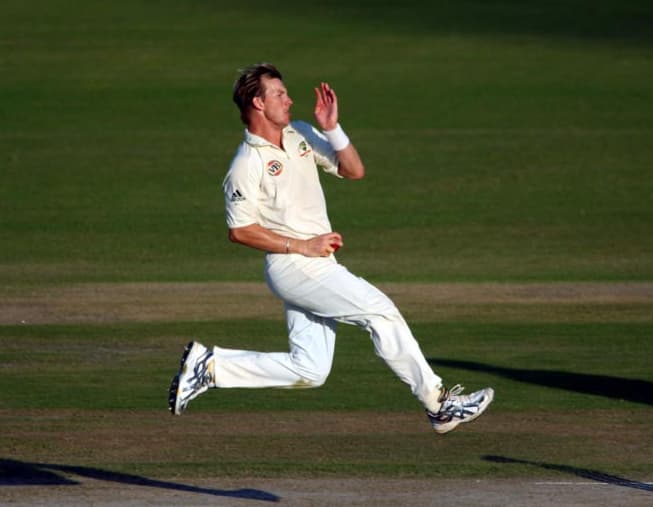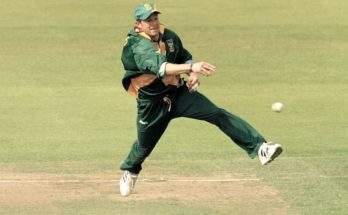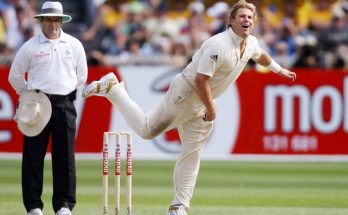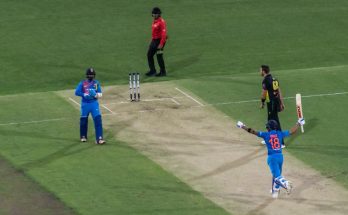Fast bowling is the heartbeat of cricket. It’s the thrilling spectacle of a bowler charging in and delivering a ball at sheer pace, with batsmen dancing on the crease.
This component of the game not only entertains but also plays a pivotal role in a team’s success.
How to Become a Fast Bowler in Cricket?

The Anatomy of a Fast Bowler
- Physical attributes: height, strength, and flexibility Taller bowlers can extract extra bounce, but irrespective of height, strength and flexibility are crucial. Muscular power aids in generating pace, while flexibility helps in the smooth execution of the action.
- Mental fortitude: focus, determination, and resilience Bowling fast requires mental grit. One must be focused on every delivery, determined to succeed despite challenges, and resilient enough to bounce back after being hit for runs.
Understanding the Basics of Fast Bowling
- The difference between fast and spin bowling While fast bowlers rely on pace and movement off the seam, spinners exploit the friction of the pitch to turn the ball.
- Key terminologies: seam position, swing, bounce, and pace These are fundamental for any aspiring fast bowler. Seam position affects how the ball behaves after pitching. Swing, whether conventional or reverse, means the ball’s movement in the air. Bounce and pace are self-explanatory, indicating the trajectory of the ball and its speed respectively.
Starting from Scratch: Beginners Tips
- Importance of a solid stance and grip A robust stance and grip form the foundation. They ensure stability and help generate maximum force.
- Basics of the bowling action and run-up A fluid action combined with a rhythmic run-up can generate a significant pace. It’s essential to synchronize the steps, leading with a high-arm action.
Run-up Dynamics
- Significance of a consistent run-up An inconsistent run-up can hinder pace and accuracy. Bowlers need to find a rhythm that’s comfortable and repeatable.
- How to measure and mark your run-up Start from the crease and walk backwards until you reach a distance where you feel you can gather enough momentum. Mark this spot. This ensures repeatability and consistency.
- Tips to increase speed during the run-up Focus on a balanced head position and strong arm-pumping. Staying light on the feet helps in generating better momentum.
Bowling Techniques: Seam and Swing
- Understanding the upright seam position An upright seam position means the ball will either swing or deviate off the seam, making it challenging for batsmen.
- The art of conventional swing: Outswing and inswing Conventional swing depends on the ball’s condition and seam orientation. Outswing moves away from the batsman, while inswing moves inwards.
- Reverse swing: mastering the old ball This swing, predominantly with older balls, is due to aerodynamic imbalances. It’s tricky, and mastering it can make a bowler deadly.
Training and Exercises for Aspiring Fast Bowlers
- Cardio workouts: for stamina and endurance Endurance is crucial. Interval running and long-distance jogs improve cardiovascular fitness.
- Strength training: targeting the core, legs, and shoulders Squats, deadlifts, and shoulder presses enhance muscular strength, critical for generating pace.
- Flexibility exercises: yoga and stretching routines Flexibility prevents injuries and aids in a smoother bowling action. Incorporating yoga and daily stretches can be beneficial.
Injury Prevention and Recovery
- The importance of warm-ups and cool-downs Gradual warm-ups prepare the body, while cool-downs aid recovery, reducing the risk of injuries.
- Common injuries and their prevention strategies Fast bowlers often face stress fractures, hamstring pulls, and side strains. Regular conditioning, proper techniques, and physio consultations can mitigate these.
- Rehabilitation exercises and the road to recovery Personalized physiotherapy sessions, combined with strength and conditioning, expedite recovery.
Diet and Nutrition for Fast Bowlers
- Essential nutrients for building strength and endurance Proteins aid muscle repair, carbs provide energy, and fats support cellular functions. A balanced diet is paramount.
- Hydration: its crucial role in a bowler’s performance Dehydration can lead to cramps and decreased performance. Consuming electrolytes and water is essential.
- Supplementation: what’s beneficial and what’s not While natural nutrition is preferred, sometimes supplements like whey protein, BCAAs, and Omega-3 fatty acids can help. However, it’s vital to consult with a nutritionist.
Analyzing Great Fast Bowlers: Case Studies
- The magic of Wasim Akram: mastering the swing Akram’s ability to swing the ball both ways, especially reverse, made him a legend.
- Dale Steyn’s relentless pace and aggression Steyn’s capability to maintain high speeds consistently, coupled with his aggression, intimidated batsmen globally.
- Glenn McGrath: precision and consistency personified Without express pace, McGrath relied on impeccable line, length, and seam movement, making him one of the best.
Psychology of Fast Bowling
- Handling pressure during crucial game moments Embracing pressure and treating it as a challenge can be the difference between an average and a great bowler.
- Bouncing back after a bad spell Cricket is about highs and lows. Visualizing success and learning from failures helps in bouncing back.
- Mental exercises and techniques for enhanced focus Meditation, visualization, and breathing exercises can sharpen focus, essential for a fast bowler.
Equipment Essentials for Fast Bowlers
- Picking the right cricket ball: size, seam, and shine Selecting a ball with a prominent seam can aid swing and seam movement.
- Importance of comfortable cricket shoes Good shoes provide grip and support, ensuring the bowler can deliver without hindrance.
- Protective gear: helmets, pads, and more Safety is paramount. Using helmets while practicing, along with other protective gear, can prevent severe injuries.
Adapting to Different Pitch Conditions
- Decoding pitch reports: understanding bounce and seam movement Each pitch offers something unique. Reading the conditions and understanding the nuances can dictate a bowler’s strategy.
- Adjusting techniques for subcontinental pitches On slower pitches, variations like cutters can be more effective than raw pace.
- Bowling in damp, swinging conditions In overcast conditions, maintaining an upright seam and exploiting the swing can be beneficial.
Practical Drills to Improve Pace and Accuracy
- Target practice: bowling at a single stump It hones accuracy. If you can consistently hit a single stump, targeting a batsman becomes easier.
- Partner drills: mastering line and length with feedback Having a partner provide real-time feedback helps in immediate correction and improvement.
- Advanced drills with equipment like speed guns Using tools like speed guns can provide quantitative data, helping bowlers understand areas of improvement.
Learning from Mistakes: Common Pitfalls and Corrections
- Overstepping and no-balls: causes and remedies Maintaining a consistent run-up and practicing the point of release can reduce no-balls.
- Remedying inconsistent lines and length Regular target practice and video analysis can be instrumental in fixing inconsistencies.
- Addressing loss of pace or swing Going back to the basics, and working on the action, grip, and seam position can resolve these issues.
Staying Motivated on the Journey
- Celebrating small victories and milestones Acknowledging every improvement, however minor, fuels motivation.
- Handling criticism and staying resilient Constructive criticism helps grow, while resilience ensures longevity in the sport.
- Setting realistic and achievable goals Having clear, achievable targets ensures continuous development.
Best Ever Fast Bowling Masterclass With Brett Lee:
Conclusion:
The path to becoming a fast bowler in cricket is filled with hard work, dedication, and passion. It’s about continuously honing the craft, learning from every game, and staying committed to the journey.
For those who embrace the challenges, the rewards are unparalleled – the joy of a well-delivered ball, the thrill of a wicket, and the satisfaction of contributing to a team’s success.
Aspiring bowlers, wear your heart on your sleeve and let the fire of passion drive you towards excellence.
Also Check: How to Get Selected in the Indian Cricket Team



